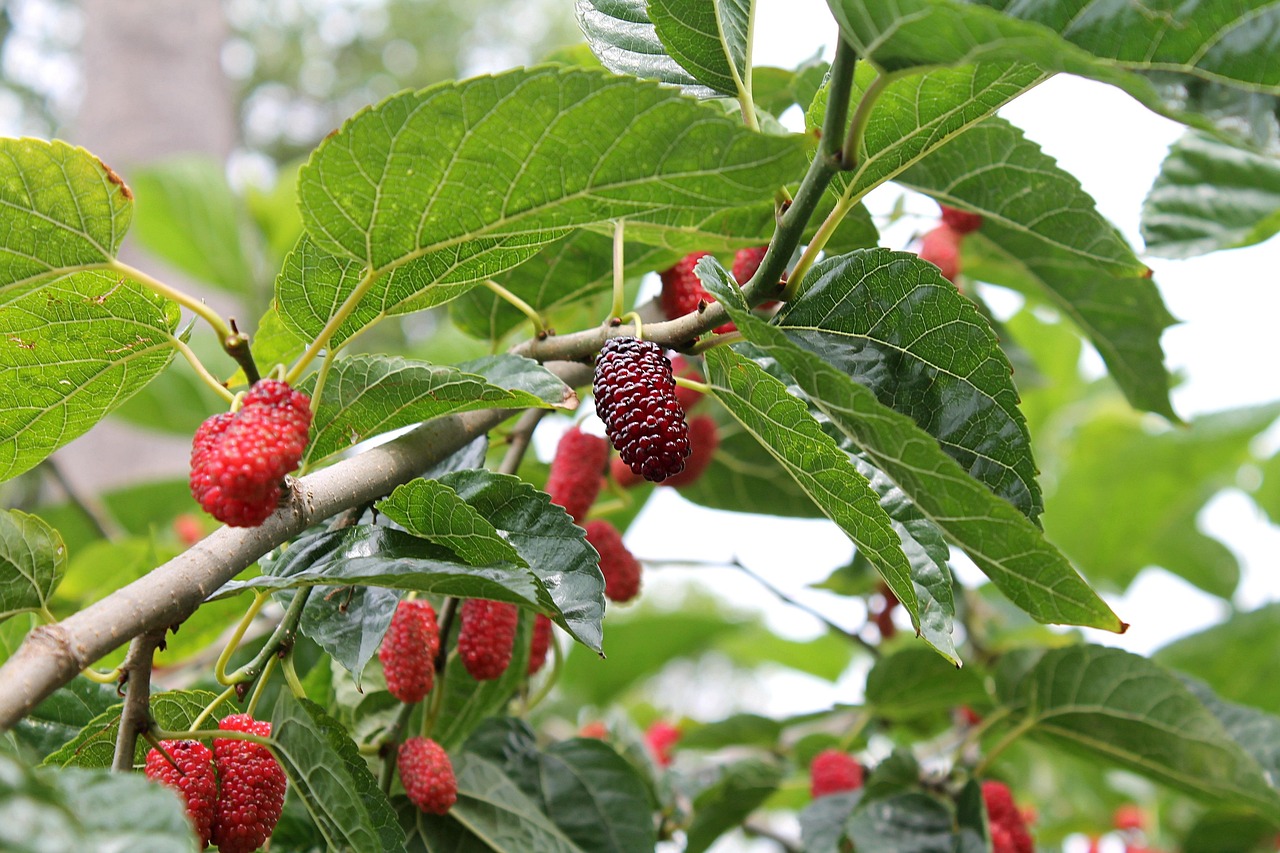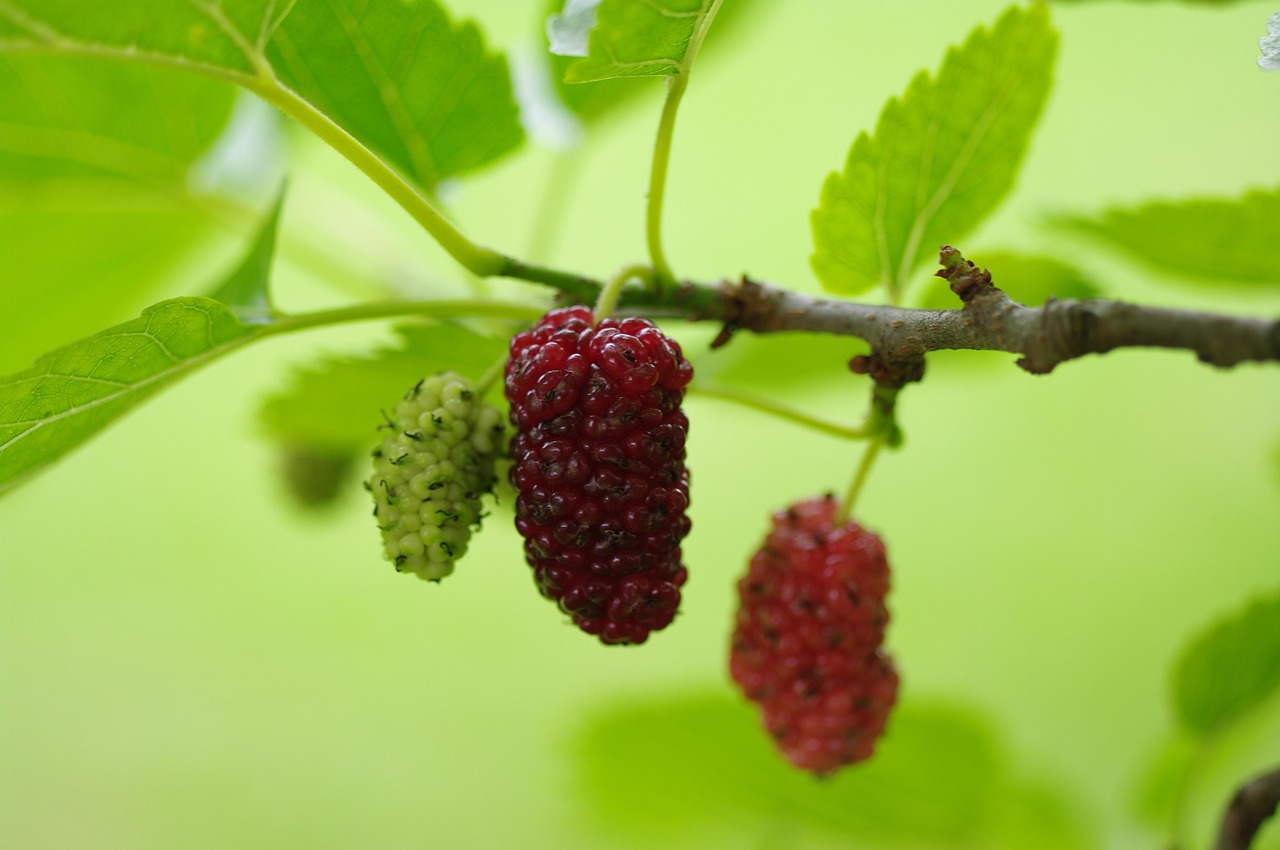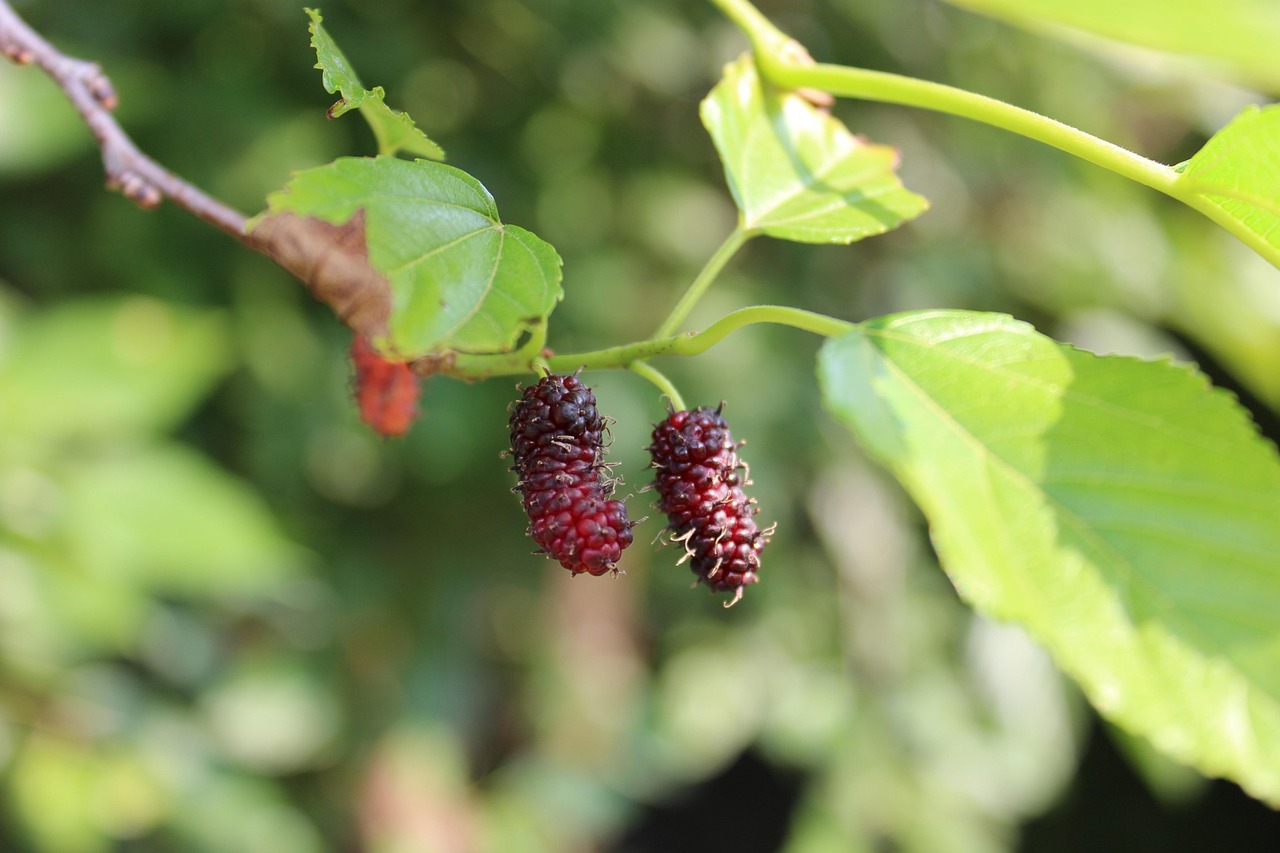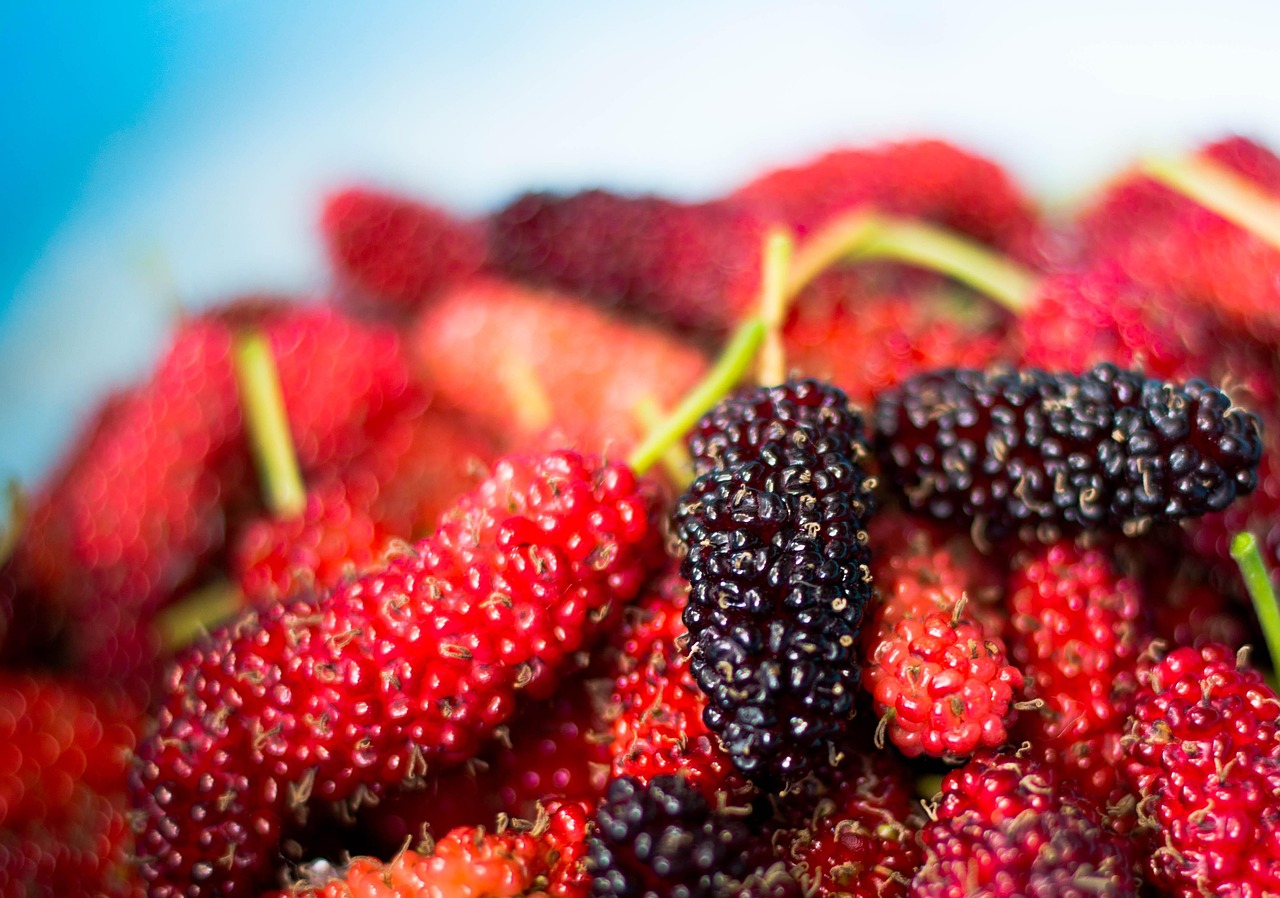The mulberry tree typically grows at a rate of 2 to 3 feet per year, depending on the species and growing conditions. Under optimal conditions, some varieties can bear fruit within 1 to 2 years after planting, making them a great choice for fast fruit production.
Understanding Mulberry Trees
Mulberry trees are deciduous plants belonging to the Moraceae family. These trees are known for their sweet, nutritious fruits and are popular among gardeners and commercial growers alike. They thrive in various climates, making them adaptable to many regions across the United States.

There are several species of mulberry trees, but the most commonly cultivated ones include the black mulberry (Morus nigra), red mulberry (Morus rubra), and white mulberry (Morus alba). Each species has its unique characteristics, including growth rates, fruit flavor, and hardiness.
One of the most appealing aspects of mulberry trees is their rapid growth rate. Home gardeners often seek fast-growing fruit trees to enjoy a harvest sooner. Understanding the growth conditions and requirements for mulberry trees can help optimize their growth and fruit production.
Growth Rate Factors
Several factors influence the growth rate of mulberry trees. These include soil quality, sunlight exposure, water availability, and proper care. Here are some key factors to consider:

- Soil Quality: Mulberries prefer well-draining soil rich in organic matter. Soil pH should ideally be between 6.0 and 7.5.
- Sunlight: These trees thrive in full sun, requiring at least 6 hours of direct sunlight daily for optimal growth.
- Watering: Regular watering is crucial, especially during dry spells. However, overwatering can lead to root rot.
- Fertilization: A balanced fertilizer can promote healthy growth. It is advisable to fertilize in early spring.
Optimal Conditions for Fast Growth
To achieve the fastest growth rate for mulberry trees, gardeners should provide optimal conditions. Here are some recommendations:
- Choose a location with well-drained soil and full sun exposure.
- Water regularly but avoid waterlogged conditions.
- Fertilize annually in early spring with a balanced fertilizer.
- Prune the tree regularly to encourage branching and increase fruit production.
Mulberry Tree Varieties
The growth rates and fruiting times can vary among different mulberry species. Below is a comparison of common varieties:
| Variety | Growth Rate (ft/year) | Time to Fruit (Years) | Fruit Color |
|---|---|---|---|
| Black Mulberry | 2-3 | 1-2 | Dark Purple/Black |
| Red Mulberry | 1-2 | 2-3 | Red/Purple |
| White Mulberry | 3-4 | 1-2 | White/Yellow |
The black mulberry is often favored for its rich flavor and quicker fruiting time. However, the white mulberry is known for its faster growth rate and adaptability to various soils. Choosing the right variety based on your local climate and soil conditions can significantly impact your success in growing mulberries.

Pest and Disease Management
Like any fruit tree, mulberries are susceptible to pests and diseases that can affect their growth and fruit yield. Common pests include aphids, spider mites, and scale insects. Regular monitoring and integrated pest management strategies can help maintain healthy trees.
Diseases such as powdery mildew and root rot may also pose threats. Ensuring proper air circulation through pruning and avoiding excessive watering can help prevent these issues.
By understanding the growth rate factors and optimal conditions for mulberry trees, gardeners can maximize their chances of achieving fast fruit production.
Planting and Care Techniques for Mulberry Trees
Successful growth of mulberry trees not only relies on choosing the right variety but also on proper planting and care techniques. Understanding the best practices for planting can significantly enhance growth rates and fruit production.
Best Time to Plant
The optimal time to plant mulberry trees is during the early spring or fall. Planting during these seasons allows the trees to establish their root systems before facing the stress of summer heat or winter cold. Here are some tips for timing:

- Spring Planting: Aim for late March to early May, after the last frost.
- Fall Planting: Late September to early November is ideal, allowing roots to grow before winter.
Site Selection
Selecting the right site is crucial for healthy mulberry tree growth. Consider the following factors:
- Sunlight: Choose a location that receives full sun exposure for at least 6 hours a day.
- Space: Ensure ample space for the tree’s mature size. Mulberry trees can grow quite large, so plan accordingly.
- Drainage: Avoid low-lying areas where water can accumulate. Well-draining soil is essential to prevent root rot.
Soil Preparation
Soil preparation is a vital step before planting mulberry trees. Follow these guidelines:
- Testing Soil: Test the soil pH to ensure it falls between 6.0 and 7.5.
- Amending Soil: Incorporate organic matter such as compost or well-rotted manure to improve soil texture and nutrients.
- Tilling: Loosen the soil to a depth of at least 12 inches to promote healthy root development.
Planting Technique
When ready to plant, follow these steps for optimal results:
- Dug a hole twice as wide and deep as the root ball of the tree.
- Place the tree in the hole, ensuring that the root collar is level with the surrounding soil.
- Fill the hole with soil, gently packing it down to eliminate air pockets.
- Water thoroughly after planting to help settle the soil around the roots.
Watering Requirements
Watering is essential for mulberry tree growth, particularly during their establishment phase. Here are some watering guidelines:
- Establishment Period: Water deeply once a week during the first growing season.
- Mature Trees: Once established, mulberries are relatively drought-tolerant but still benefit from watering during prolonged dry spells.
- Signs of Overwatering: Yellowing leaves and wilting can indicate excess moisture.
Fertilization Practices
Proper fertilization helps promote healthy growth and fruit production in mulberry trees. Consider the following practices:
Type of Fertilizer
A balanced fertilizer such as 10-10-10 or a slow-release organic fertilizer works well for mulberries. Here’s how to apply it:
- Timing: Fertilize in early spring before new growth begins.
- Application Rate: Follow manufacturer recommendations based on tree age and size.
- Watering after Fertilization: Water the tree after applying fertilizer to help nutrients penetrate the soil.
Signs of Nutrient Deficiency
Nutrient deficiencies can affect growth and fruit yield. Watch for these signs:
- Pale Leaves: Indicate nitrogen deficiency.
- Purple Leaves: May suggest phosphorus deficiency.
- Browning Edges: Can be a sign of potassium deficiency.
Pruning Techniques
Pruning is an important practice for maintaining healthy mulberry trees and enhancing fruit production. Proper pruning encourages airflow and sunlight penetration, which are crucial for fruit development.
When to Prune
The best time to prune mulberry trees is during late winter or early spring while they are still dormant. This timing helps minimize stress on the tree and promotes vigorous growth in spring.
Pruning Steps
- Crown Thinning: Remove any dead, damaged, or crossing branches to improve airflow.
- Crown Reduction: If necessary, reduce the height of the tree by cutting back tall branches.
- Suckers Removal: Regularly remove suckers from the base of the tree to promote healthier growth.
Caring for mulberry trees through proper planting, watering, fertilization, and pruning will significantly enhance their growth rates and fruit production capabilities. Following these practices will lead to a fruitful harvest in just a few years.
Harvesting Mulberries
Harvesting mulberries at the right time is crucial for obtaining the best flavor and quality of fruit. Understanding when and how to harvest can lead to a more enjoyable and bountiful experience.
When to Harvest
Mulberries are typically ready for harvest in late spring to early summer, depending on the variety and local climate conditions. Here are some key indicators that the fruit is ripe:
- Color Change: The berries will change color based on the variety—black mulberries turn a deep purple or black, while red mulberries become a rich red, and white mulberries turn a pale yellow or white.
- Softness: Ripe mulberries will feel soft to the touch but not mushy.
- Flavor: Taste a berry; if it is sweet and flavorful, it is likely ready for harvest.
Harvesting Techniques
Using proper techniques for harvesting can maximize yield and minimize damage to the tree. Here’s how to effectively harvest mulberries:
- Timing: Harvest in the early morning or late afternoon when temperatures are cooler.
- Gentle Picking: Use your fingers to gently pull the berries from the stem. Avoid tugging too hard to prevent damaging the branches.
- Use Containers: Collect the berries in shallow containers to avoid crushing them. A flat basket or tray works well.
Post-Harvest Care
After harvesting, it is essential to handle the berries with care to maintain their quality. Follow these steps:
- Cleaning: Rinse the berries gently under cool water to remove any dirt or debris.
- Drying: Pat the berries dry with a clean towel or let them air dry on a clean surface.
- Storage: Store fresh mulberries in a refrigerator. They can last up to a week when properly stored.
Uses of Mulberries
Mulberries are not only delicious but also versatile in their uses. They can be enjoyed fresh or used in various culinary applications. Here are some common uses:
Culinary Uses
Mulberries can be incorporated into a variety of dishes and beverages. Consider these options:
- Fresh Consumption: Enjoy them straight off the tree as a healthy snack.
- Baking: Add mulberries to muffins, pies, or tarts for a burst of flavor.
- Preserves and Jams: Cook down mulberries with sugar to create delicious jams or jellies.
- Smoothies: Blend fresh or frozen mulberries into smoothies for added nutrients and flavor.
Nutritional Benefits
Mulberries are not only tasty but also packed with nutrients. Here are some health benefits associated with consuming mulberries:
| Nutrient | Benefit |
|---|---|
| Vitamins C | Boosts immune function and promotes skin health. |
| Iron | Essential for red blood cell production and energy levels. |
| Fiber | Aids in digestion and helps maintain healthy cholesterol levels. |
| Antioxidants | Protects against oxidative stress and may reduce inflammation. |
Pest and Disease Prevention Strategies
Preventing pests and diseases is essential for maintaining healthy mulberry trees and ensuring a productive harvest. Implementing preventative measures will help protect your trees from common threats.
Pest Management
Pests can pose a significant threat to mulberry trees. Below are common pests and recommended management strategies:
- Aphids: Small, soft-bodied insects that suck sap from leaves. Use insecticidal soap or neem oil to manage infestations.
- Spider Mites: Tiny pests that thrive in hot, dry conditions. Increase humidity around the tree and use miticides if necessary.
- Caterpillars: Various species may feed on leaves. Handpick them off or use organic pesticides as needed.
Disease Management
Mulberry trees can also be susceptible to diseases, such as powdery mildew and root rot. Here are some strategies for prevention:
- Avoid Overwatering: Ensure good drainage to prevent root rot.
- Proper Spacing: Plant trees with enough space between them to allow for airflow.
- Cultural Practices: Remove fallen leaves and debris from around the tree base to reduce disease risk.
By effectively managing pests and diseases, you can enhance the growth rate and fruit production of your mulberry trees, leading to a successful harvest season.
Companion Planting and Mulberry Trees
Companion planting can enhance the growth of mulberry trees by promoting healthier plants and deterring pests. Certain plants can benefit mulberries when grown nearby. Here are some beneficial companions:
- Garlic: Acts as a natural pest deterrent and may help repel aphids.
- Chives: Similar to garlic, chives can deter pests and enhance the flavor of nearby plants.
- Marigolds: These flowers attract beneficial insects and can repel harmful pests, creating a healthier environment for mulberries.
- Legumes: Planting legumes such as clover can fix nitrogen in the soil, enriching it for mulberry trees.
Environmental Considerations
When planting mulberry trees, it’s essential to consider their environmental impact. Mulberries can contribute positively to local ecosystems in several ways:
- Wildlife Habitat: Mulberry trees provide food and shelter for various birds and wildlife, particularly during their fruiting season.
- Soil Improvement: The deep root systems of mulberries help prevent soil erosion and improve soil health over time.
- Biodiversity: Planting mulberries alongside other native plants supports biodiversity and promotes a balanced ecosystem.
Mulberry Tree Varieties for Different Climates
Selecting the right variety of mulberry tree is crucial for optimal growth in different climates. Here are some recommendations based on climate conditions:
Cooler Climates
For regions with colder winters, the following varieties are more suitable:
- Red Mulberry (Morus rubra): Adaptable to a variety of conditions and hardy in cooler climates.
- Black Mulberry (Morus nigra): Thrives in well-drained soil and offers rich flavor, though may require some winter protection.
Warmer Climates
In warmer areas, consider these varieties:
- White Mulberry (Morus alba): Fast-growing and adaptable, making it ideal for warmer regions.
- Pakistan Mulberry (Morus macroura): Known for its large fruit and rapid growth, suitable for hot climates.
Final Thoughts
Growing mulberry trees can be a rewarding experience, providing both beautiful foliage and delicious fruit. Understanding their growth rate, care requirements, and the best practices for harvesting can significantly impact your success. By providing optimal growing conditions, including proper watering, fertilization, pruning, and pest management, you can ensure a fruitful harvest.
Additionally, companion planting and selecting the right variety for your climate can further enhance your mulberry-growing experience. As you cultivate these trees, remember that they contribute positively to the environment by supporting local wildlife and improving soil health.
With a little patience and care, your mulberry trees will not only thrive but also produce bountiful fruit for many seasons to come. Whether enjoyed fresh or used in various dishes, mulberries are a delightful addition to any garden.
